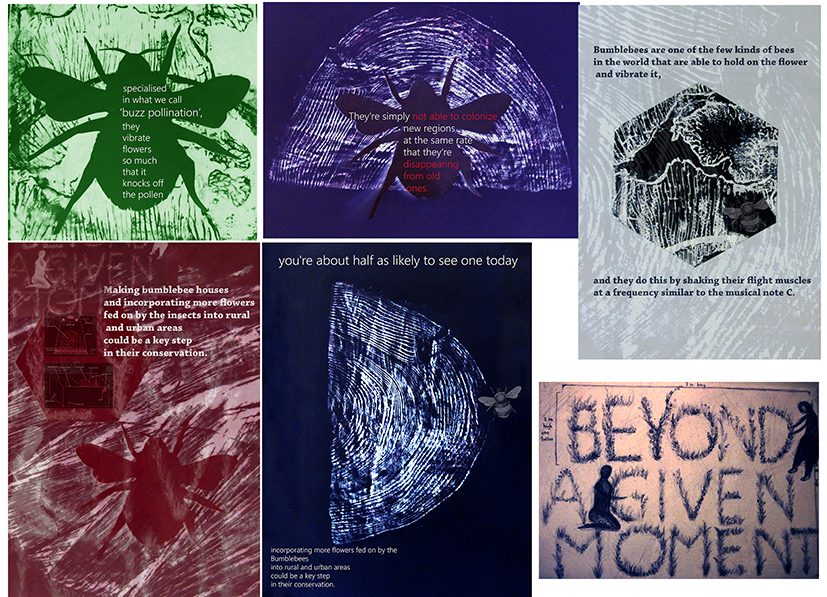Award 2021
Welcome to the Social Art Award 2021 – Online Gallery!
We are grateful for the many inspiring contributions from artists around the world. The selected works reflect a broad spectrum of contemporary social art practices and explore new relationships between humans, nature, and technology. They address themes such as ecological regeneration, climate justice, sustainable futures, social resilience, and more-than-human perspectives.
Below you will find the submissions from the Social Art Award 2021 – New Greening edition that passed the initial jury round. The Online Gallery offers public visibility to these works and encourages dialogue around their ideas and approaches; it does not replace the final jury decision.
Thank you to all artists for sharing your visionary and committed work. We invite you to explore the gallery and engage with the perspectives shaping New Greening.
Community land art piece, Blind spot Adaptation...
Nikolina Butorac
Community land art project is divided in two stages. First stage is shown to the public in form of posters works, pasted in places like tram and bus stations for city-light posters. Information about the workshops would be added to the posters. Along with the posters, I’m sending a sketch of land art installation made of plants that attract pollinating insects. Bumblebees and bees are disappearing because of habitat lost, neonicotinoid pesticides and temperatures they haven’t previously had to tolerate. Through this project I want to incorporate more native flowers fed on by the insects into rural and urban areas. This installation, along with two new ones, would be planted as collaborative workshops between biology students and art academy students, encouraging the people from public to participate. I formed sentence: Beyond a given moment. With this thought I’m pointing on a moment now, we have to recreate and change, so that all living things can have a better future on this Planet. Every year we’re seeing the impacts of climate change grow, but increasingly alarming topic is the extinction of pollinating insects, such as bees and bumblebees. Students will design houses for wild bees and bumblebees, placing them close to land art pieces. I want this project to be open to all individuals who feel connected to this topic and feel the need to contribute. Working within new communities, I’m decoding spaces and visitors, since the audience – particularly the accidental one – is the seed of reality that processes the artistic act, thereby growing together with the artist. What currently interests me is to research about possibilities of overlapping the individual and collective experiences. I focus on climate change narratives. My research leads me to (our) human ways of relating to the non-human elements, that inhabit this Earth with us, such as different landscapes, environments, and less known forms of co-existence. By using the gesture of planting, I occupy myself, I seek to leave the product of my experience to viewers and passers-by. For me, creativity has a lot of different variations, views and actions, which produce an interpretation of a specific issue. Within this project students and ordinary people, will find out what is common to humans and pollinating insects, what attracts us to flowers, is it their scent, colour, or the healing properties of the flower itself. Art gardening is a tool which can be used in a wider sense for waking up people in creating a widespread resistance of unnecessary consumption, in relaxation and returning people into the peacefulness of nature.
Community land art project is divided in two stages. First stage is shown to the public in form of posters works, pasted in places like tram and bus stations for city-light posters. Information about the workshops would be added to the posters. Along with the posters, I’m sending a sketch of land art installation made of plants that attract pollinating insects. Bumblebees and bees are disappearing because of habitat lost, neonicotinoid pesticides and temperatures they haven’t previously had to tolerate. Through this project I want to incorporate more native flowers fed on by the insects into rural and urban areas. This installation, along with two new ones, would be planted as collaborative workshops between biology students and art academy students, encouraging the people from public to participate. I formed sentence: Beyond a given moment. With this thought I’m pointing on a moment now, we have to recreate and change, so that all living things can have a better future on this Planet. Every year we’re seeing the impacts of climate change grow, but increasingly alarming topic is the extinction of pollinating insects, such as bees and bumblebees. Students will design houses for wild bees and bumblebees, placing them close to land art pieces. I want this project to be open to all individuals who feel connected to this topic and feel the need to contribute. Working within new communities, I’m decoding spaces and visitors, since the audience – particularly the accidental one – is the seed of reality that processes the artistic act, thereby growing together with the artist. What currently interests me is to research about possibilities of overlapping the individual and collective experiences. I focus on climate change narratives. My research leads me to (our) human ways of relating to the non-human elements, that inhabit this Earth with us, such as different landscapes, environments, and less known forms of co-existence. By using the gesture of planting, I occupy myself, I seek to leave the product of my experience to viewers and passers-by. For me, creativity has a lot of different variations, views and actions, which produce an interpretation of a specific issue. Within this project students and ordinary people, will find out what is common to humans and pollinating insects, what attracts us to flowers, is it their scent, colour, or the healing properties of the flower itself. Art gardening is a tool which can be used in a wider sense for waking up people in creating a widespread resistance of unnecessary consumption, in relaxation and returning people into the peacefulness of nature.



